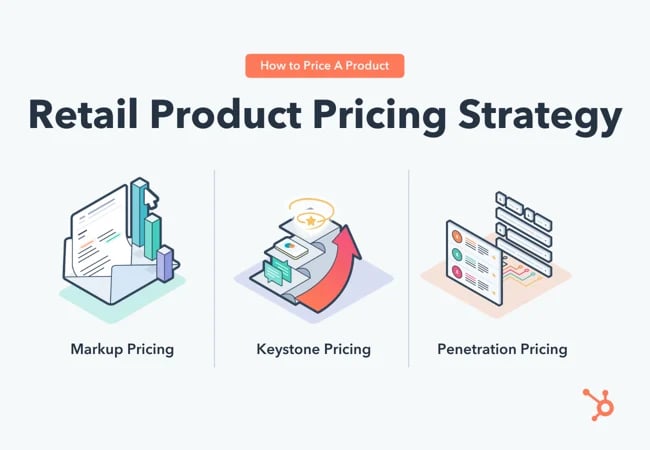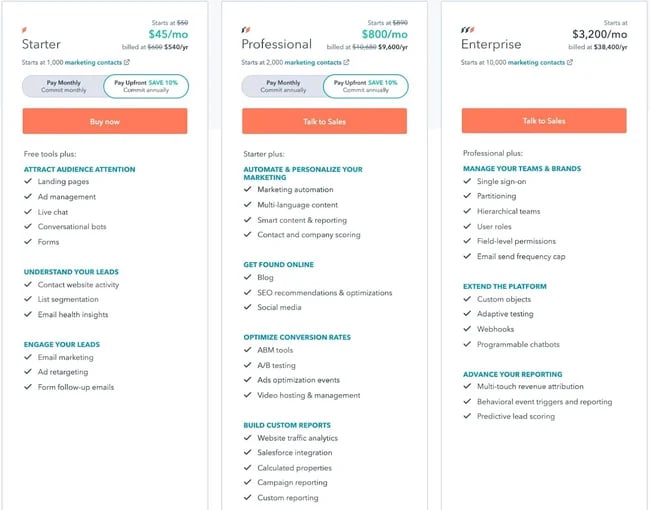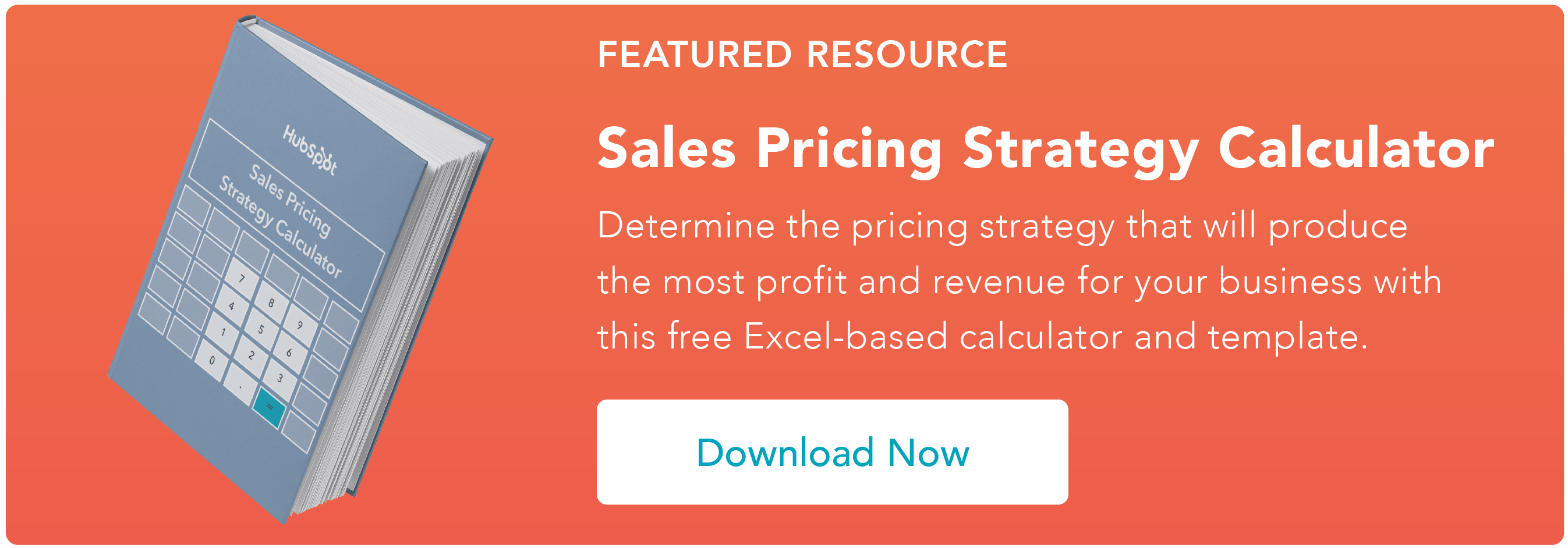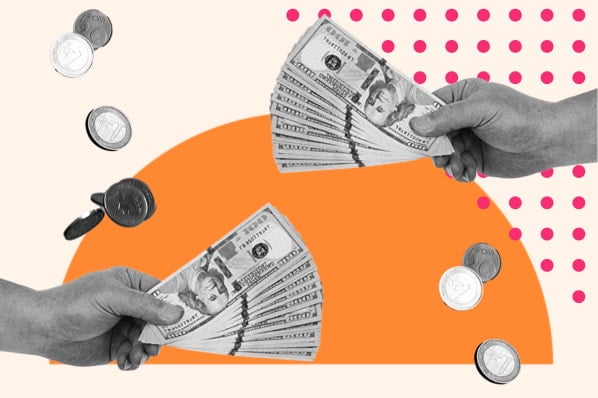A good sales team is like a high-powered engine, but pricing your product poorly is like sticking that engine in a lawnmower instead of a Lamborghini.

Finding the right price for a new company can seem like a daunting task, but knowing how to price a product is fundamental to your success. Here are some tips that you can use to get your team the deal flow they’ll need to hit their numbers. Let's dive in.
Product Pricing Formula
Given the range of potential pricing strategies businesses can employ, there's no definitive method for pricing a product. Any "formula" you leverage will hinge upon several factors — including your industry, business size, structure, and broader business model.
That said, there are a few elements that consistently play into how most products are priced — components that have a place in almost every pricing "formula". Here's a look at those key points to consider.
How to Price a Product
- Understand your fixed and variable costs.
- Get a feel for your industry and competition.
- Get to know who's buying.
- Identify a profit margin and revenue target.
- Be ready for some trial, error, and volatility.
1. Understand your fixed and variable costs.
Cost might be the most fundamental factor in pricing a product. No matter what the industry standards, trends, or competition around your product might be, your objective will always be to make money. To do that, you need to know what costs you incur when you produce your product.
Consider your variable costs — the ones that change with your level of output. These could include the prices of packaging, raw materials, or shipping. Also, assign a dollar value to the time you spend on producing your product and factor that in as well. Time is money — know how much yours is worth.
Then, consider your fixed costs — the ones that remain the same no matter what your volume of production is. This could include the rent you pay for your facilities, the costs of any permits your business might need to make your product, or your employees' fixed salaries.
Take all these costs together to identify what producing your product costs on a monthly or annual basis. Use that figure to understand what it will take to consistently make a profit.
2. Get a feel for your industry and competition.
It's important to remain mindful of the competition. Find out what people are willing to pay for comparable products and use those industry standards as a reference point.
That sets the stage for a process that takes critical thought and self-awareness — identifying what differentiates your product from the competition and factoring that into your price.
If you're looking to sell at a higher price point, be prepared to convince consumers that your product is first-rate. If you're trying to sell at lower price points, be ready to show prospects they won't be compromising quality for value if they purchase your product.
If you believe you can pull off one of those kinds of messaging, then price your products higher or lower than your competition. No matter how you plan to price relative to your competitors, always understand where your product stands in its space. That means taking the time and effort to determine both your and your competition's public perception.
3. Get to know who's buying.
Every product has a target market. There are specific buyer personas who will be more receptive to what you have to offer than others. These personas will have different interests, sensitivities, values, backgrounds, and — most importantly — purchasing habits. Get to know who's most inclined to buy your product, and that into consideration when pricing.
Surveys, buyer persona interviews, social media, and several other tools and tactics can be leveraged to get a picture of who you're appealing to. Understand their priorities. Are they willing to pay more for premium quality? Are they looking for deals? Do you think they'll be loyal to your brand?
It won't be easy, and it might take a lot of trial, error, and effort to land on definitive buyer personas to consider when pricing. Still, if you stick with it, you'll put yourself in the best position possible to hit the optimal price point for your product.
4. Identify a profit margin and a revenue target.
The most attractive, exciting figure when pricing a product is profit. In all likelihood, that's why your business exists in the first place. After you've conducted extensive competitive research, determined your product's place in your industry, and gotten a feel for who you're selling to, you'll come up with an ideal profit margin for your business.
That process can be tough. You have to choose a grounded, realistic figure that still allows you to operate, expand, and live comfortably — a margin that you are content with and capable of reaching.
Once you have that figure, add it to your estimated fixed and variable costs, and you have a revenue target. After you have that target, it's relatively easy to figure out how it plays into the overall pricing equation.
Estimate how many units of your product you realistically believe you can ship over the next year. Take your annual revenue target and divide it by that number. Now, you have a rough picture of what you have to charge for your product.
5. Be ready for some trial, error, and volatility.
There's no exact science to pricing a product, so there's no guarantee you'll nail it on the first try. You shouldn't be reluctant to change your price if it's not working for you.
Just make sure you're consistently running a profit and covering your expenses. Make some tweaks here and there as you go, and you'll eventually land on that optimal price point.
That being said, there are some potentially volatile scenarios you should always be mindful of. Different, often-shifting external factors can force you to change prices.
That could include the volume of product you can ship, your competitors' prices, the efficacy of your marketing efforts, or the public perception of your product. Your price will probably be fluid. It will take some testing to get it right, and you might find yourself adjusting it consistently.
How to Price a Product for Retail

There are a variety of methods you can use to price your physical product for retail. The pricing method that's best for your business will depend on the industry, market conditions, and the type of product you're selling. Here are a few of the most common retail pricing methods.
1. Markup Pricing
Markup pricing, or cost-plus pricing, is a simple pricing method where a fixed percentage is added on top of the production cost for one unit of product (unit cost). It's most often used by companies who sell retail products.
2. Keystone Pricing
Keystone pricing is where you sell your product at double the cost of goods sold. This is a simple pricing method. But, depending on what type of product you sell, the price could be too high for the value customers expect to receive from the product.
3. Penetration Pricing
A penetration pricing strategy is used by new companies who enter the market and price their product at an extremely low price. The goal of this strategy is to disrupt businesses in the market and entice customers with a price that's much lower than the competition.
How to Price a Software Product

1. Flat-Rate Pricing
Flat-rate pricing is probably the most straightforward software pricing method. As you can probably assume, it's the practice of charging a single price for your solution. It generally applies to SaaS products with a single set of features.
This pricing model has its share of perks and drawbacks. On the plus side, these kinds of prices are simple for you to communicate and easy for customers to understand. That said, flat-rate pricing interferes with your ability to appeal to and extract value from a wider range of customers.
2. Per-User Pricing
Per-user pricing is one of the more popular pricing strategies for SaaS products that can be leveraged by multiple users within an organization. Plans that follow this pricing structure feature incremental price hikes based on how many individuals within a company use the product in question.
Like flat-rate pricing, the per-user model is straightforward and simple. It also allows your business to scale with adoption — the more users you bring on, the more revenue you generate. But the structure comes with its share of drawbacks.
Charging per user often incentivizes businesses to find ways to game your system to accommodate more users without paying accordingly. It can also encourage churn — once a company's volume of users hits a critical point, your solution might stop being financially viable. That might lead them to explore other options with different pricing structures.
Here's an example of what that looks like from Calendly.

3. Tiered Pricing
Tiered pricing is another prominent strategy for pricing software products. With this model, businesses offer multiple pricing options — with varying degrees of available features and functionality — to suit a variety of prospects with different needs and budgets.
Tiered pricing is effective in its ability to reach a diverse array of customers. It rests on a solid understanding of buyer personas and considers prospects' interests on a more personal level. Still, businesses might run into trouble when leveraging the strategy.
In some cases, companies struggle with creating distinct enough options to capitalize on prospects' unique preferences. Additionally, having too many options might be confusing and frustrating for prospects — potentially undermining sales.
Here's an example of what the strategy looks like in practice:

When it comes to pricing we aren’t aiming for perfection. In fact, charging the correct price out of the gate rarely happens. Instead, with these tips, you can find an initial price that will help your sales team get the product to the customer and create a lot of value in the process. You already put in the time to make a good product, so go ahead, set that price, and start your engines.
Editor’s note: This post was originally published in March 2021 and has been updated for comprehensiveness.







![Price Skimming: All You Need To Know [+ Pricing Calculator]](https://blog.hubspot.com/hubfs/price-skimming-strategy.jpg)

![B2B Pricing Models & Strategies [+ Pros and Cons of Each]](https://blog.hubspot.com/hubfs/b2b-pricing-models-and-strategies.jpg)

